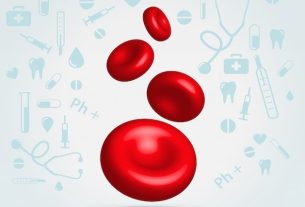Triglycerides are a type of fat in the blood and a source of energy for the body, important for the proper functioning of the body. This type of fat is produced by the liver, which transforms calories from food consumed in excess into fat to be stored within cells.
Triglycerides are released into the bloodstream when you fast for a long time, to maintain the body’s energy supply, or when you maintain an inadequate diet, for example. However, despite being essential for the body, when triglycerides are high, they can be deposited within the blood vessels, increasing the risk of cardiovascular problems, such as heart attack, atherosclerosis or stroke.
To avoid health problems related to high triglycerides, it is recommended to practice physical activity regularly and maintain a diet low in fat and sugar. Find out how to follow a diet to lower triglycerides.

What are worth for
Triglycerides are a source of energy for the body, which are stored as fat within cells and released into the bloodstream when the body needs energy.
This type of fat is produced by the liver and transported into cells by cholesterol known as VLDL. However, the main source of triglycerides in the body are calories consumed in excess of carbohydrates, proteins and fats.
Thus, when ingesting excess calories, triglycerides are used immediately to generate energy for the body, or stored in the form of fat within cells, to be released in situations of prolonged fasting or inadequate nutrition.
Table of triglyceride reference values
To assess the amount of triglycerides circulating in the body, the doctor must request a blood test, and total and fractionated cholesterol levels are also normally requested.
The reference values for triglycerides are:
The recommendation to carry out a triglyceride test must be individualized and guided by the doctor, and people with associated risk factors, such as high blood pressure, diabetes, smoking or who have a family history of high triglycerides, require greater care and should perform this test. examination periodically, as indicated by the doctor.
Risks of high triglycerides
When triglyceride levels are high in the bloodstream, they can deposit on the walls of blood vessels, causing them to stiffen or making it difficult for blood to pass through. Furthermore, high triglyceride levels can also cause inflammation in the pancreas.
The main risks associated with increased blood triglyceride levels are:
- Atherosclerosis;
- Myocardial infarction;
- AVC;
- Liver diseases;
- Pancreatitis;
- Decompensated diabetes;
- Hypothyroidism.
Generally, high triglycerides do not cause symptoms, however, when levels are too high, fat can be deposited on the skin, forming small pockets of fat, called xanthomas, or the appearance of white spots on the retina. Know how to identify the signs of high triglycerides.
What to do to lower triglycerides
To reduce triglycerides, it is important to undergo medical monitoring, which should guide some changes in habits that help to lower triglycerides quickly, such as eating a balanced diet, with a low intake of fats and sugars, and practicing physical exercise regularly. Check out other ways to lower high triglycerides.
Furthermore, if necessary, the doctor may prescribe the use of medicines to reduce triglyceride levels, such as atorvastatin calcium or rosuvastatin, for example. However, these remedies should only be used when other strategies were not sufficient, as they have several side effects.
What can low triglycerides mean?
Low triglycerides are usually related to hormonal problems and most often occur in cases of low weight, diseases that hinder the absorption of nutrients, hyperthyroidism or chronic obstructive pulmonary disease.
Having very low triglyceride levels may indicate that there is a low amount of energy stored in the body, which can make it difficult for the body to function properly and absorb fat-soluble vitamins, such as vitamins A, D, E and K, which are important for vision. absorption of calcium into bones or blood clotting.
Therefore, although there is no minimum value for the amount of triglycerides in the blood, to normalize low triglyceride values, in addition to controlling the cause with medical treatment, one must adopt a healthy and balanced diet, eating meals every 3 3 hours, for example. Learn how to increase low triglycerides.

Sign up for our newsletter and stay up to date with exclusive news
that can transform your routine!
Warning: Undefined array key "title" in /home/storelat/public_html/wp-content/plugins/link-whisper-premium/templates/frontend/related-posts.php on line 12
Warning: Undefined array key "title_tag" in /home/storelat/public_html/wp-content/plugins/link-whisper-premium/templates/frontend/related-posts.php on line 13



